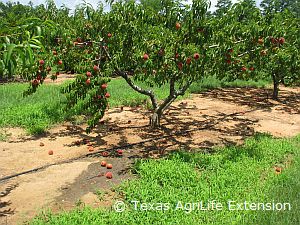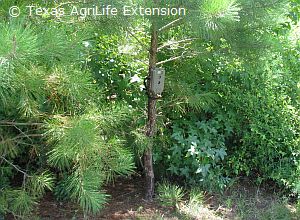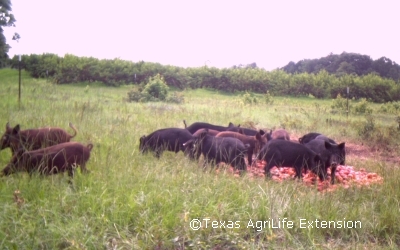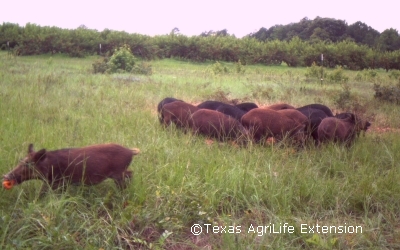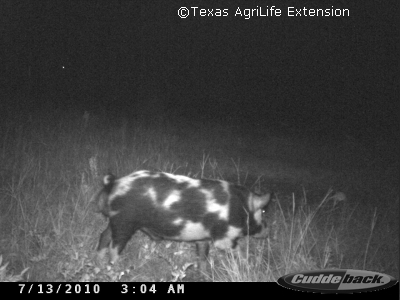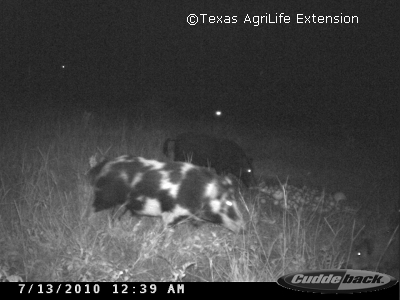“Chumming for Feral Hogs”
Its peach picking time in Texas and that means hungry feral hogs are looking for an easy meal!
Welcome and come along on this journey of a trapping effort to abate feral hog damage to a commercial peach orchard near the Texas AgriLife Research and Extension Center at Overton. Dr. Billy Higginbotham, Professor and Extension Wildlife and Fisheries Specialist, continually reminds landowners attempting to abate feral hog damage that trapping is a process, not an event. In order to demonstrate that process through remote camera imagery, Dr. Higginbotham is posting a photographic record of the trapping process from beginning to end here. Its not in “real time” but it will give the viewer a feel for how to go about efficiently and effectively trapping feral hogs. The process began in late June as the farmer began chumming the hogs with over-ripe peaches to a location immediately adjacent to the orchard (but outside his 3 wire electric fence). A week or so later on July 7, a remote-sensing camera was hung over the fermented bait site to monitor and determine the number of hogs in the sounder. This information will then be used to determine the size of the trap to be constructed. So, enjoy the images as we proceed through the pre-baiting or “chumming” phase, as Dr. Higginbotham likes to call it. Notice in the images that we really have two distinct groups of hogs responding to the bait: A family group consisting of sows, their pigs and a few young boars and then a second group that comes at a different time consisting of either solitary boars or a few boars together. Armed with these camera data, we will soon proceed with trap construction now that the number of offending hogs is known. Stay tuned……..
